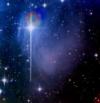

| Visitors Now: | |
| Total Visits: | |
| Total Stories: |

| Story Views | |
| Now: | |
| Last Hour: | |
| Last 24 Hours: | |
| Total: | |
At least 32 musk oxen freeze to death after storm … EYE Report

 Researchers found the frozen animals March 15 while flying over the Bering Land Bridge National Preserve to track at least four of the animals, which had been outfitted with radio collars.
Researchers found the frozen animals March 15 while flying over the Bering Land Bridge National Preserve to track at least four of the animals, which had been outfitted with radio collars.
ANCHORAGE, Alaska – At least 32 musk oxen were found frozen in the ice on the northern coast of Alaska's Seward Peninsula, killed in the aftermath of a tidal surge and flooding from a winter storm blowing in off the Chukchi Sea, the National Park Service said Tuesday.
"Basically, the radio collars led us to the dead animals," National Park Service spokesman John Quinley said.
Officials planned to fly over the area again Tuesday to determine the fate of another 23 animals in the herd. It wasn't immediately clear if any of those were fitted with collars.
"We didn't see any carcasses, but we didn't see them walking around," he said.
The remainder of the herd could be buried deeper in the snow. If so, the bodies wouldn't be visible until spring.
It's believed the animals died Feb. 25 when a winter storm created a tidal surge and coastal flooding that inundated lowlands.
Before that, the group of 55 animals was seen Feb. 14, when four were fitted with GPS collars as part of a five-year study on the dynamics of the musk oxen population in northwest Alaska.
The National Park Service plans to document the group of animals killed by taking teeth and bone samples to determine the age and health of the musk oxen as a reflection of the larger population.
There are about 3,000 musk oxen on the Seward Peninsula, and there are about 100,000 worldwide, Quinley said.
"In terms of population numbers, this is not a huge blow," he said.
The park service also is warning people of nearby villages and researchers who may be in the area to be aware that other predators – including brown bears, possibly polar bears, wolverines and foxes – may be drawn to the carcasses.
The service also reminded people that it's illegal to remove horns from national park lands, and this meat is likely not salvageable or "palatable for us," he said. They are not releasing the exact location of the frozen animals to help deter scavengers.
Such die-offs of a large number of animals are not unheard of because of where musk oxen live and their habits, and about 30 were killed a few years back on the North Slope. It's no different when large numbers of animals, like caribou or wolves, are killed in avalanches.
"You end up with these sort of multiple fatalities from natural causes. They're not happening every day but they're happening fairly often," Quinley said.
"Spread across the size of Alaska, they're going to happen," he said.
The 2.6-million-acre preserve, about 600 miles northwest of Anchorage, is a remnant of the land bridge that connected Asia to North America.



